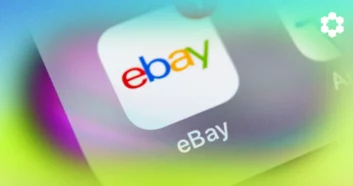This article is part of a 3-part series covering Amazon FBA fees and updates for 2024. For a comprehensive breakdown of fees and impacts, download the FREE whitepaper.
Amazon’s recent changes to its FBA fees have many sellers concerned about the future profitability of selling on the platform. However, with careful planning and execution, success is still achievable. This blog post outlines top tips on how to reduce Amazon FBA fees that can help you to successfully navigate increasing fees and continue thriving on Amazon.
1. Optimize Inventory Management
Efficient inventory turnover is critical for minimizing expensive FBA storage fees. Regularly analyze sales velocity data to forecast demand more accurately. This prevents stocking out and overstocking items that sit too long in Amazon’s warehouses.
Ecommerce solutions like SoStocked provide users with actionable analytics to optimize restock quantities and inventory age based on historical trends. You can also set optimal reorder points and establish safety stock levels to buffer against unexpected fluctuations in demand or supply chain disruptions. Lastly, embrace just-in-time (JIT) principles to minimize excessive stock and regularly conduct ABC analysis to prioritize high-value, high-demand items.
2. Reduce Your Product’s Dimensional Weight
Ensure accurate and minimal product dimensions and weight to avoid unnecessary oversize or overweight fees. This includes using efficient packaging, which is essential for Amazon sellers because it directly impacts FBA shipping costs.
Dimensional weight, or DIM weight, is a pricing technique used by carriers to account for the amount of space a package occupies in relation to its actual weight. Carriers and Amazon FBA charge based on the higher of the two: the actual weight or the dimensional weight. This pricing model is especially relevant for larger but lighter items.
If the package is large and takes up a significant amount of space in the delivery vehicle, carriers charge based on the dimensional weight to account for the opportunity cost of not being able to carry other packages in that space, so reducing DIM weight can result in cost savings for fulfillment services.
Here are some strategies to reduce your product’s DIM weight:
- Optimize packaging size: Use packaging that is as compact as possible while still providing adequate protection. Avoid using excessively large boxes for small or lightweight items. In addition, work with your suppliers to ensure that products are packaged in the most space-efficient way. Discuss packaging dimensions and collaborate to find solutions that reduce DIM weight.
- Minimize packaging material: Choose packaging materials that are lightweight yet provide sufficient protection. Efficient use of cushioning materials can help reduce overall package size.
- Package flattening: For products that aren’t easily damaged, consider packaging them in a flattened state. This can significantly reduce the overall package dimensions.
- Consolidate shipments: Combine multiple items into a single shipment whenever possible. This reduces the dimensional weight per carton/parcel and can result in lower shipping costs.
- Explore Amazon Certified Ships in Product Packaging: This program encourages sellers to use minimal, recyclable packaging. Participating in this program may lead to reduced fees and better customer satisfaction.
- Understand carrier DIM Weight Pricing rules: Be familiar with the DIM weight pricing rules of the carriers you use. Different carriers may have variations in their pricing models, so understanding these rules helps you optimize packaging for cost efficiency.
3. Strategic Product Bundling
If using Multi-Channel Fulfillment (MCF), look for ways to consolidate multi-unit orders to qualify for bulk discounts on fulfillment fees. For instance, bundling similar products can also incentivize customers to add more items to each order, earning you multiplicative savings on MCF fees.
Aside from bundling related products for a lower price, you can also increase your customer’s average order value by cross-selling and upselling.
Cross-selling involves encouraging shoppers to buy complementary items along with their intended product. For instance, if a customer adds a $50 Microwave Oven to their cart, cross-selling could suggest accessories like a pair of baking gloves, bacon grill, meat thermometer, or microwave rack, aiming to increase the overall order value.
On the other hand, upselling focuses on persuading shoppers to buy more expensive items or upgrades, thereby increasing the total order value. For example, if a customer is considering the $50 Microwave Oven, an upsell offer might highlight a $75 Microwave Oven with advanced features, encouraging the buyer to opt for a higher-priced option.
4. Regularly Review and Adjust Pricing
Keep an eye on your product pricing and adjust it to accommodate changes in Amazon’s fee structure. This can help maintain profitability even when fees change.
Strategic pricing adjustments may temporarily reduce margins but can effectively move stagnant inventory. Advanced inventory management tools like SoStocked offer an Overstock Dashboard feature to help you find and track excess inventory, allowing you to identify optimal markdown price points for faster sell through.
5. Calculate Amazon FBA Fees
Use Amazon’s FBA fee calculator to understand the impact of various factors on your fees. This tool allows you to estimate the fees associated with different product dimensions, weight tiers, and categories.
Gaining a deeper understanding of the fees you incur and their impact on your profit margins stands as a vital facet of selling with Amazon. Many sellers find themselves in a deficit due to a lack of awareness regarding the true cost of each product after all considerations. Consequently, they face challenges in setting accurate prices, exploring more cost-effective logistics and fulfillment options, and effectively managing and minimizing overall costs.
So, how much does it cost to set up shop on Amazon?
The costs associated with selling on Amazon can vary based on various factors such as the type of account, the category of the product, and the fulfillment method. Here are some key aspects to consider when understanding the costs of selling on Amazon.
Seller Account Types
- Individual Seller Account: This is suitable for those who plan to sell fewer than 40 items per month. There is no monthly subscription fee, but sellers pay a per-item fee for each sale.
- Professional Seller Account: Designed for high-volume sellers, this account type involves a monthly subscription fee, but individual item fees are typically lower than those for individual accounts.
Referral Fees
Amazon charges a referral fee on each item sold, which is a percentage of the item’s sale price. The referral percentage varies based on the product type, with the majority falling in the range of 15% or below.
Variable Closing Fees
Some categories may have variable closing fees, which are additional fees on media items like books, music, and video games.
Storage and Fulfillment Fees
If you choose to use FBA, there are fees associated with storage, picking, packing, and shipping your products. These fees depend on the size and weight of the items.
Subscription Fees
The subscription fees are determined by the type of seller account you choose. Professional sellers are charged a fixed monthly subscription fee of $39.99 for their Amazon selling account, whereas Individual sellers incur a per-item fee of $0.99 for each item sold.
Advertising Costs
If you use Amazon’s advertising services, such as Sponsored Products or Sponsored Brands, you will incur additional costs based on your ad spend. Sellers typically incur higher costs based on ad spend due to advertising fees, cost-per-click models, competitive bidding, dynamic strategies, campaign budgets, testing, seasonal demand, new product launches, and algorithmic adjustments.
Understanding and managing these factors is crucial for controlling costs and maximizing the return on ad investment. However, balancing the optimization of PPC campaigns to both enhance traffic and improve organic ranking can be a challenging task. Many sellers opt for either employing a dedicated ad agency to handle the intricacies or resort to cost-effective alternatives, such as leveraging tools like PPC Entourage. These tools automate the implementation and optimization of PPC strategies, offering an efficient solution for sellers looking to streamline their efforts and maximize results.
How to Lower FBA Fees?
Carefully review Amazon’s fee structure, which may be subject to changes, and consider these costs when pricing your products. Additionally, you should factor in expenses related to product sourcing, packaging, and any external services you utilize. By understanding the complete cost structure, you can make informed decisions to optimize your pricing strategy and maximize profitability on Amazon.
6. Monitor and Manage Inventory Levels

Avoid aged inventory surcharge and overage fees by regularly monitoring your inventory levels and managing your stock. For instance, SoStocked offers several Amazon seller dashboards, including an inventory tracker, which helps prevent both overstocking and understocking issues, minimizing the likelihood of holding inventory for extended periods. It can also send alerts and notifications when products are running low on stock or when it’s time to sell or promote slow-moving items. This proactive approach helps avoid the accumulation of excess inventory which if neglected, may result in higher storage fees.
7. Consider Multi-Channel Fulfillment (MCF)
It’s also wise to explore additional sales channels beyond Amazon. Although Amazon offers unparalleled reach, diversification mitigates reliance on one platform. Consider highly trafficked sites like Walmart and eBay, which leverage existing FBA infrastructure through Amazon’s MCF program. Of course, evaluate whether using Amazon’s MCF service for orders from other sales channels could be more cost-effective for certain products.
If you’re selling on other sales channels like Walmart, increase operational efficiency by easily keeping tabs on your competitors and pricing changes with WallySmarter. Planning on expanding your wholesale product list? Leverage ScanUnlimited to quickly identify the hottest products on Amazon, facilitating the expansion of your wholesale product catalog.
8. Negotiate with Suppliers and Third-Party Logistics Partners (3PLs)
Negotiate with your suppliers and 3PLs for better terms, including lower product costs, shipping fees, or bulk discounts, which can positively impact your overall profitability.
When you have additional funds available for marketing, for example, it opens up more possibilities to convert your inventory into revenue. Implementing a range of effective strategies can make a substantial difference:
- Negotiate improved lead times: Seek better lead times to prevent costly delays, ensuring a smoother and more efficient supply chain.
- Flexible payment terms for better cash flow: Engage in discussions about flexible payment terms to enhance cash flow. For instance, negotiate a payment schedule where you pay 25% upfront for a bulk order, and the remaining 75% is paid for each shipment upon its arrival.
- Incentive tiers and discounts: Request improved incentive tiers, discounts, or rebates for ordering raw materials in advance, especially if the procurement process is lengthier than anticipated.
- Invoice auditing: Conduct regular audits of invoices (e.g., freight invoice and bill of lading) to identify and rectify any duplicate charges, preventing unnecessary financial loss.
- Review 3PL fee structure with your logistics partner: Scrutinize the fee structure of your 3PL. Evaluate whether you can save on warehouse labor costs by restructuring payment methods. For example, if they charge per hour but only take 15 minutes to complete a task, explore the possibility of being billed in 15-minute increments rather than the full hour.
- Optimize shipping and storage costs: Leverage your existing relationship with logistics providers or suppliers to explore opportunities for reducing shipping and storage costs. Reliable providers are often open to collaboration and improvements to ensure a seamless partnership, as your success is inherently tied to theirs.
All in all, establishing lasting partnerships with your suppliers and logistics providers is a two-way street. By demonstrating your commitment to mutual success, you create an environment where both parties are motivated to make continuous improvements for the benefit of the overall business.
9. Use Amazon’s Partnered Carrier Program
Another expert tip on how to reduce Amazon FBA fees is to take advantage of the retailer’s Partnered Carrier Program for discounted shipping rates, potentially reducing your overall fulfillment costs.
Here’s how the program can contribute to cost savings.
- Reduced Shipping Rates: Sellers enrolled in the Partnered Carrier Program can access discounted shipping rates negotiated by Amazon. These rates are often more competitive than standard shipping rates, helping sellers save on overall shipping expenses.
- Prepaid Shipping Labels: The program provides sellers with prepaid shipping labels for shipments to Amazon fulfillment centers. This eliminates the need for sellers to negotiate and pay for shipping individually, simplifying the shipping process and potentially reducing costs.
- Simplified Logistics: Amazon’s Partnered Carrier Program integrates with the FBA shipping workflow, streamlining logistics and making the shipping process more efficient. This simplification can result in time and cost savings for sellers.
- Global Shipping Support: The program extends beyond domestic shipping, offering international shipping support. Sellers can leverage the program for cost-effective shipping solutions when sending inventory to Amazon fulfillment centers located outside their home country.
- Flexible Shipping Options: The Partnered Carrier Program offers flexibility in terms of shipping options. Sellers can choose between small parcel delivery and less-than-truckload (LTL) or full-truckload (FTL) options based on their specific shipping needs.
- Consolidated Shipments: Sellers can benefit from consolidated shipments through the program, optimizing the shipping process by combining multiple products into a single shipment. This consolidation can lead to cost savings compared to shipping individual items separately.
- Tracking and Visibility: The program provides tracking and visibility into the shipping process. Sellers can monitor the movement of their shipments, leading to better control over inventory management and potential cost reductions.
Amazon’s shipping programs may offer great support, but they can pose challenges for your FBA business when issues arise. To navigate potential setbacks effectively, it’s important to deeply understand Amazon’s shipping infrastructure and the broader shipping landscape. This understanding allows you to build the necessary flexibility into your business operations, ensuring resilience in the face of challenges. Outlined in this blog post are compelling reasons to establish a contingency plan and stay informed about the dynamics of freight, actively adapting to its impact on your business.
10. Optimize Advertising and Promotions
Optimize your advertising and promotions to increase sales velocity, which can improve your sales rank and potentially offset higher FBA fees through increased sales.
Be sure to read our post on Amazon PPC Strategy to learn how to optimize your ad campaigns for performance and profitability.
11. Evaluate Storage Options
Consider using Amazon’s storage fee discounts during non-peak seasons to reduce costs. Also, explore alternatives for off-site storage like 3PLs during periods of high storage fees.
For instance, in an effort to support sellers in managing adequate inventory levels, Amazon is implementing a reduction in non-peak monthly storage fees for standard-size products. The average decrease amounts to $0.09 per cubic foot, transitioning from the existing average of $0.87 per cubic foot to a new rate of $0.78 per cubic foot.
This adjustment is applicable during the period from January to September. However, note that monthly storage fees for non-standard-size products will remain unchanged. The effective date for this update is April 1, 2024.
12. Use Amazon Seller Reimbursement Services
Reclaim the funds owed by Amazon by seeking the expertise of FBA reimbursement service providers.
Consider working with a service provider well-acquainted with the intricacies of the reimbursement process, such as Seller Investigators (SI) and chargeguard (for first-party vendors). In contrast to standard automated reimbursement management tools on Amazon, these specialists are dedicated to optimizing your recovery efforts.
SI specifically excels in obtaining approvals for reimbursement requests that were previously declined, showcasing a nuanced understanding of Amazon’s reimbursement program, while chargeguard facilitates the recovery of up to 75% of chargeback and shortage fees.
For those encountering challenges with approvals, a service possessing insights into the complexities of Amazon’s reimbursement procedures becomes imperative. Take swift action, as you are allotted only an 18-month window to submit reimbursement claims. Any submissions beyond this timeframe are ineligible for reimbursement.
13. Monitor and Adapt to Fee Changes
Stay informed about any changes in Amazon’s fee structure and adjust your strategy accordingly. Being proactive can help you mitigate the impact of fee increases.
Remember that the effectiveness of these strategies can vary based on your specific products, business model, and market conditions. Regularly reviewing your performance and staying informed about changes
Future Outlook for Amazon Sellers

Despite complex fee structures, Amazon retains dominance given its Prime membership loyalty and unrivaled logistics network. However, expect diversification across multiple sales channels to hedge risk as competition continues growing. Sellers able to nimbly adapt using data-driven inventory management and pricing decisions will thrive amidst marketplace uncertainty.
Remain Flexible to Protect Your Profits
The recent Amazon FBA fees increases undoubtedly complicate selling on Amazon, but opportunities still abound for strategic sellers. Optimizing inventory turnover, diversifying sales channels, bundling product offerings, and making data-informed decisions are key strategies for overcoming new challenges related to rising FBA fees. Staying agile as market conditions evolve will enable seller success for years to come.
Be sure to explore Carbon6’s suite of ecommerce tools crafted by Amazon specialists to empower your business to succeed in 2024 and beyond.




